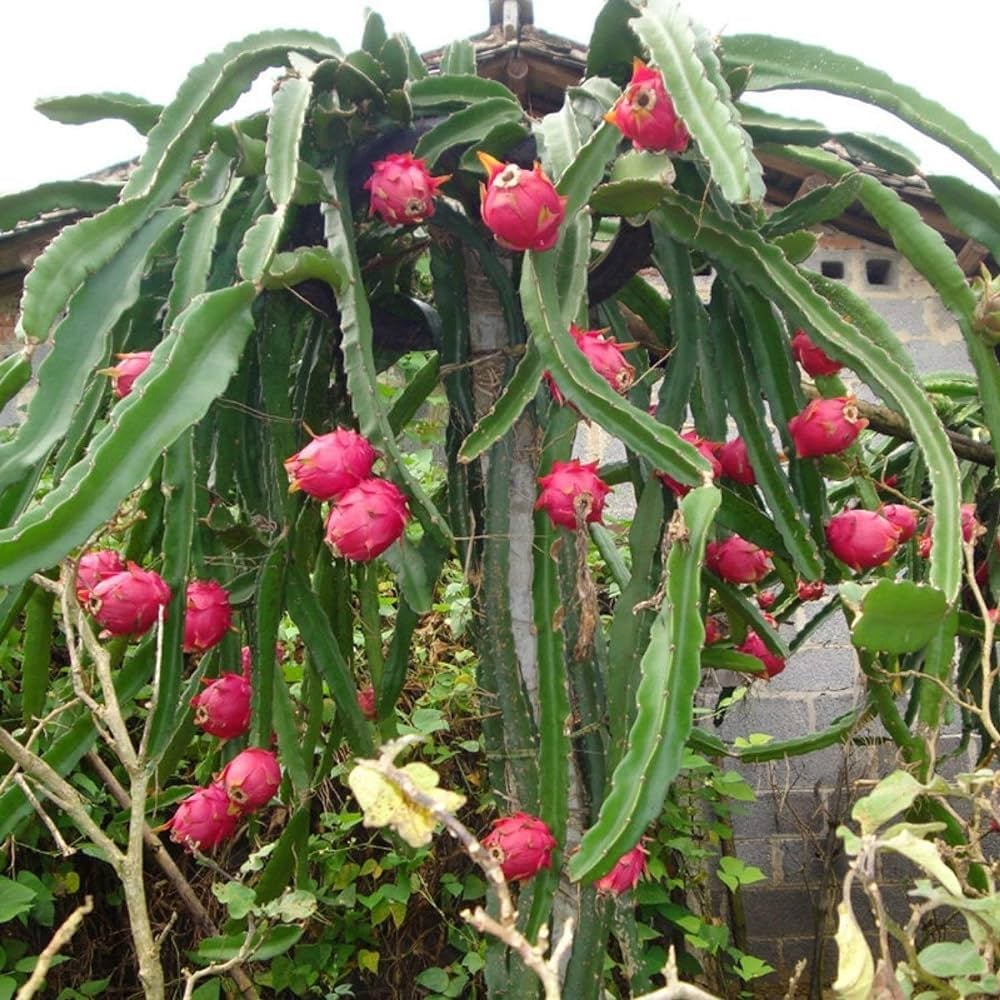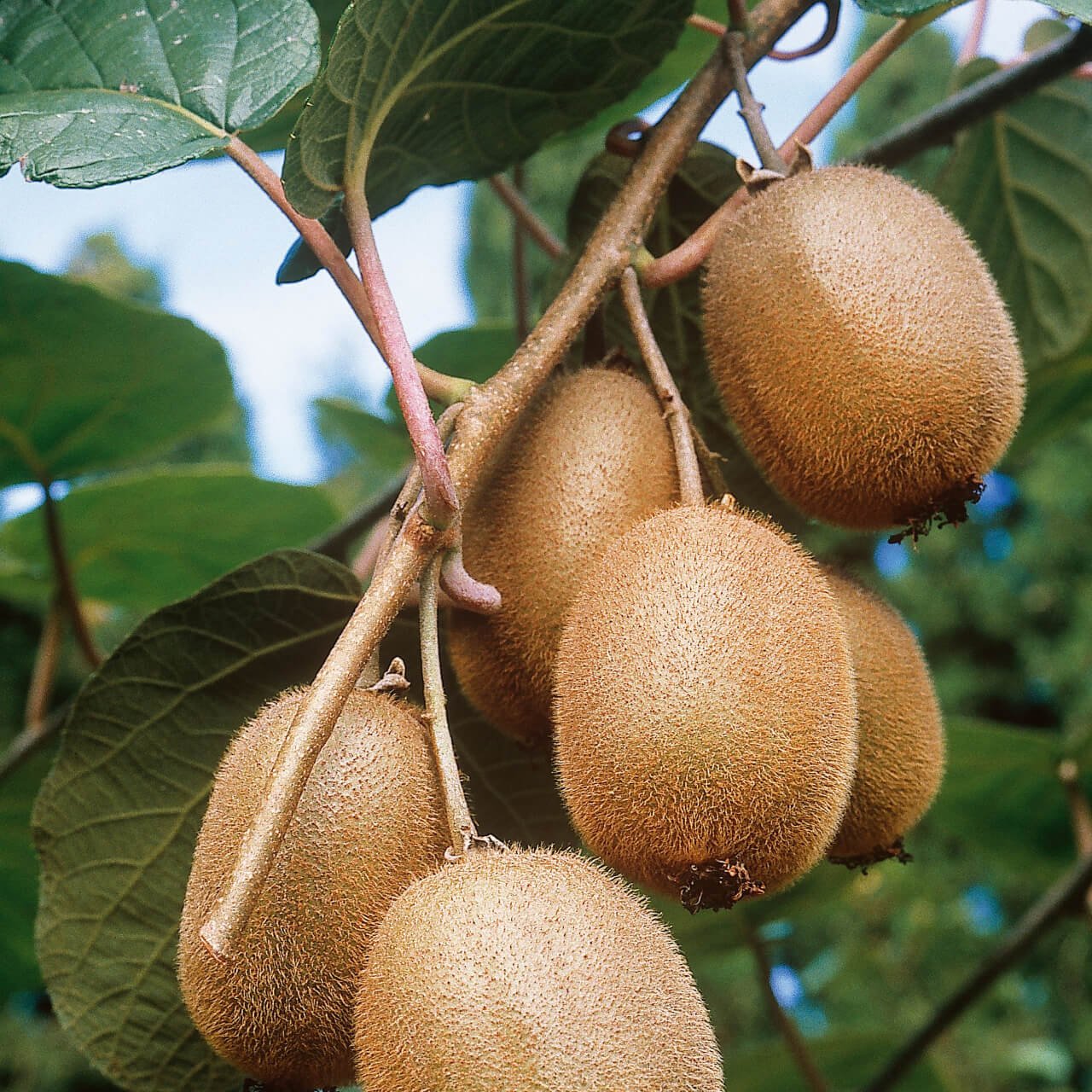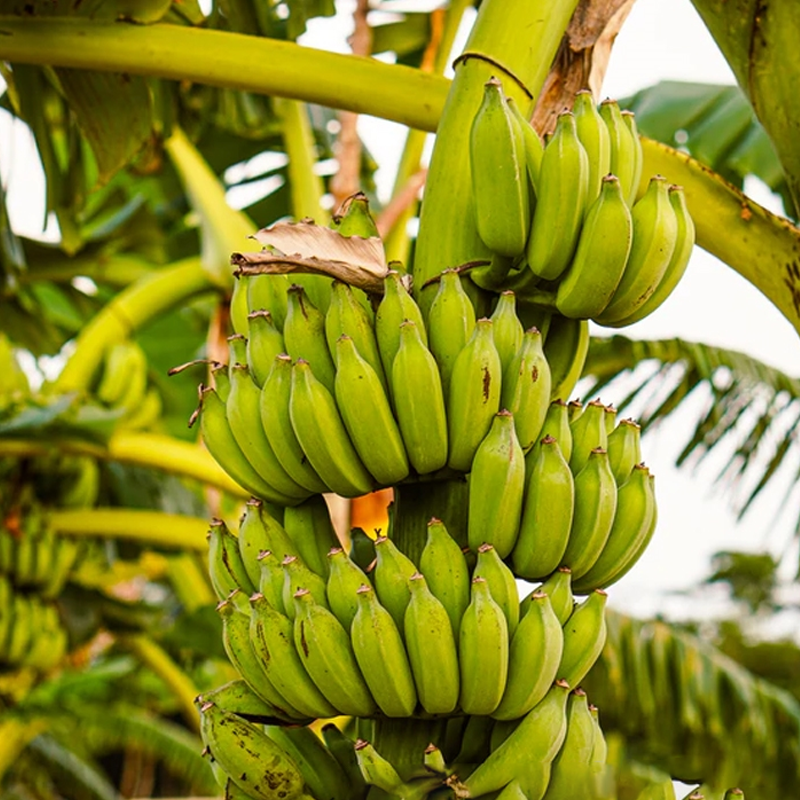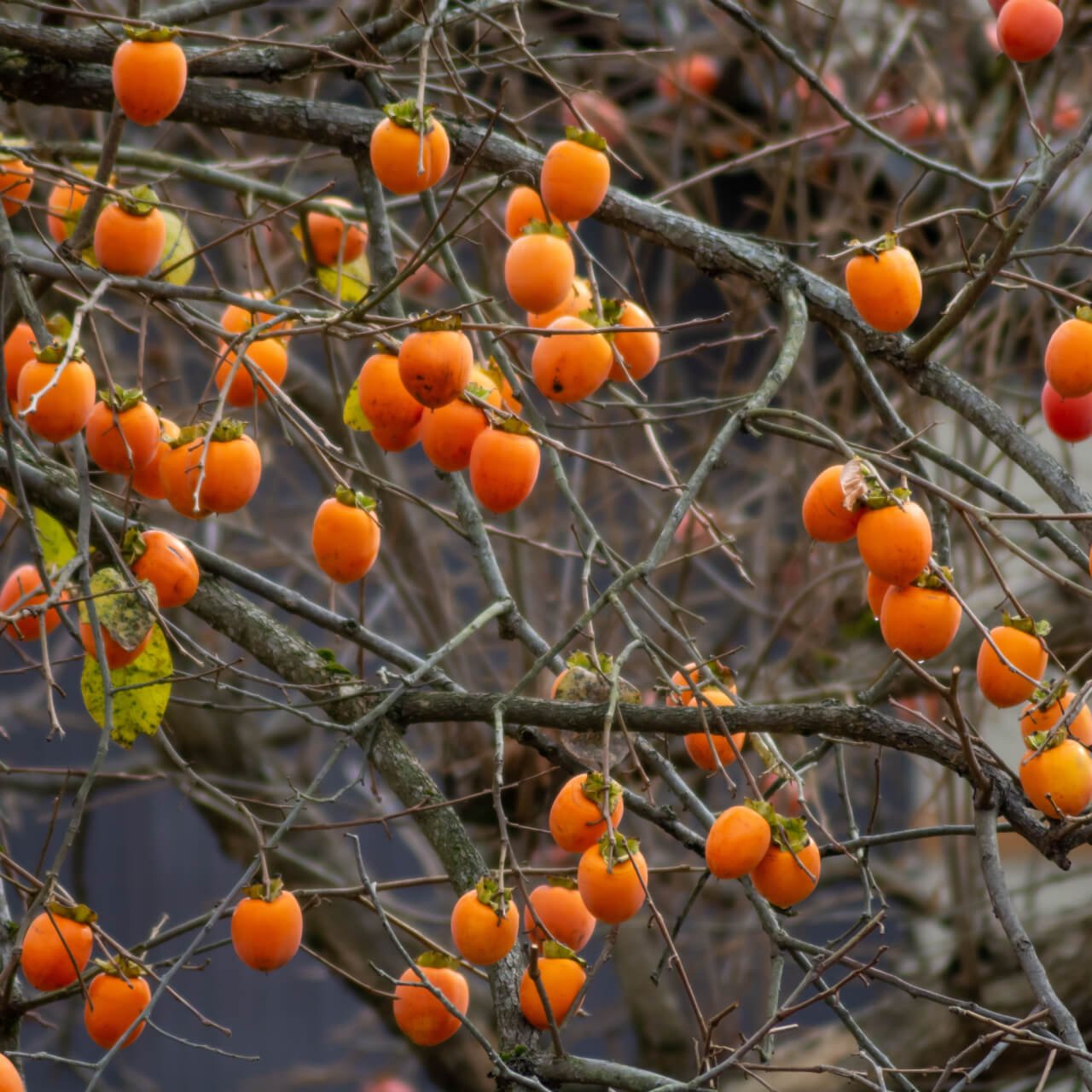
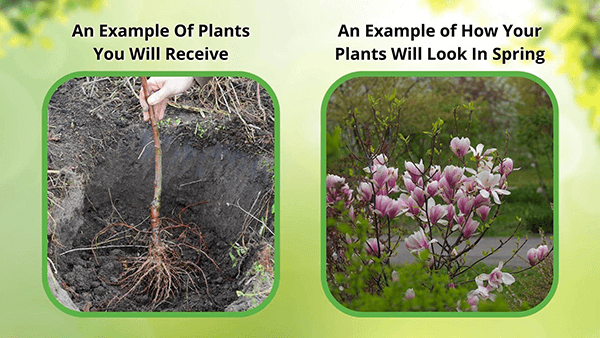
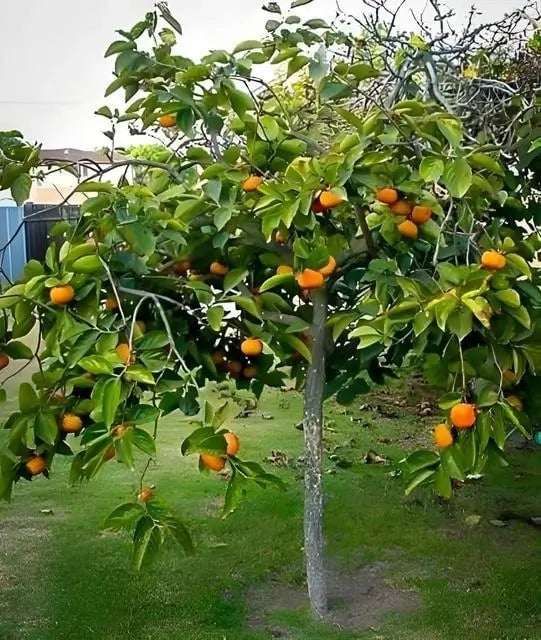

Persimmon Tree Seedlings
Attracts wildlife to your garden
Beautiful autumn foliage colors
Drought-tolerant once established
Thrives in
ZONE 4ZONE 5ZONE 6ZONE 7ZONE 8ZONE 9This plant ships:
Ships Week of May 12th1 Year Guarantee on all plants
Persimmon Tree Seedlings - Diospyros virginiana
Persimmon seedlings produce reddish-brown, sweet, and astringent fruits, adding ornamental and edible value to landscapes. They are versatile and valuable additions to landscaping, offering a range of aesthetic, ecological, and functional benefits. Their unique characteristics make them a cherished choice among landscape architects and homeowners alike.
Aesthetically, it brings beauty to any outdoor space. Its glossy green leaves, which turn vibrant shades of orange and red in the fall, provide a stunning display of seasonal foliage.
The distinctive bark, featuring tessellated blocks that exude an attractive pattern, adds an interesting visual texture to the landscape year-round. The flowers bloom with delicate, bell-shaped flowers during late spring and early summer, enhancing their appeal.
Persimmon Tree Seedlings Support Wildlife
Ecologically, it supports local wildlife, enhancing the area's biodiversity and promoting a healthy ecosystem. Additionally, it provides shelter and nesting sites for birds and small mammals, further contributing to the balance of local wildlife populations.
Functionally, it offers practical advantages as well. Its shade canopy creates a cooling effect, making it an ideal shade type for patios, outdoor seating areas, and even residential buildings. This natural cooling property can help reduce energy consumption by providing relief from the sun's heat. The wood is also highly valued for woodworking due to its durability and attractive grain, making it a potential raw material for various projects.
These Persimmon Tree Seedlings Are low-maintenance
Furthermore, it is relatively low-maintenance, requiring minimal pruning and care once established. Its adaptability to various soil types and growing conditions makes it appealing as a landscaping choice. Whether used as a standalone specimen type or integrated into a larger landscape design, it brings its unique blend of visual allure, ecological contribution, and functional benefits.
In conclusion, the plant stands as a testament to the many benefits it offers in landscaping beyond its ornamental value. From its striking aesthetics to its ecological support and functional advantages, it is a type that enhances the visual appeal of outdoor spaces and contributes to the broader health and sustainability of the environment.
Fruiting Attributes Of Them
Characteristics of these Saplings
Sustainable Practices
This Is How Your Plants Will Look upon Delivery

Bloom Season
Summer
Bloom/Foliage Color
White
Height at Maturity
Over 25 Feet
Care
Persimmon tree seedlings need well-drained soil and regular watering, especially during dry spells. Fertilize in early spring. Prune lightly to shape and remove any damaged branches. Maintain good air circulation around the tree to protect it from pests and diseases.
Plant Reproduction
Persimmon Tree Seedling spreads through seeds, suckers, or grafting
Plant seedlings in early spring or fall when temperatures are mild. Choose a well-drained site with the proper sunlight for the tree species. Dig a hole that's deep and wide enough to support but not hamper the root system without bending or crowding the roots. Place the seedling in the hole, ensuring the root collar (where the roots meet the stem) is level with or slightly above the soil surface. Fill the hole with soil, and pack it around the roots to remove air pockets. Water thoroughly after planting and keep the moisture consistent, especially during the first few years, to help the roots establish. Put a 2-4 inch layer of mulch around the base, but keep it away from the trunk to retain moisture and prevent weed growth. Protect the seedlings from pests and physical damage with suitable guards or fencing. Tree seedlings will thrive and grow into strong, healthy trees with proper care.
Shipping date depends on the date displayed and chosen when you order from the product's page.
We only accept returns on plants verified dead. If you think your plants have died, we offer a 1 year warranty, please use this File a Claim Link to verify dead plants and start with return warranty process.





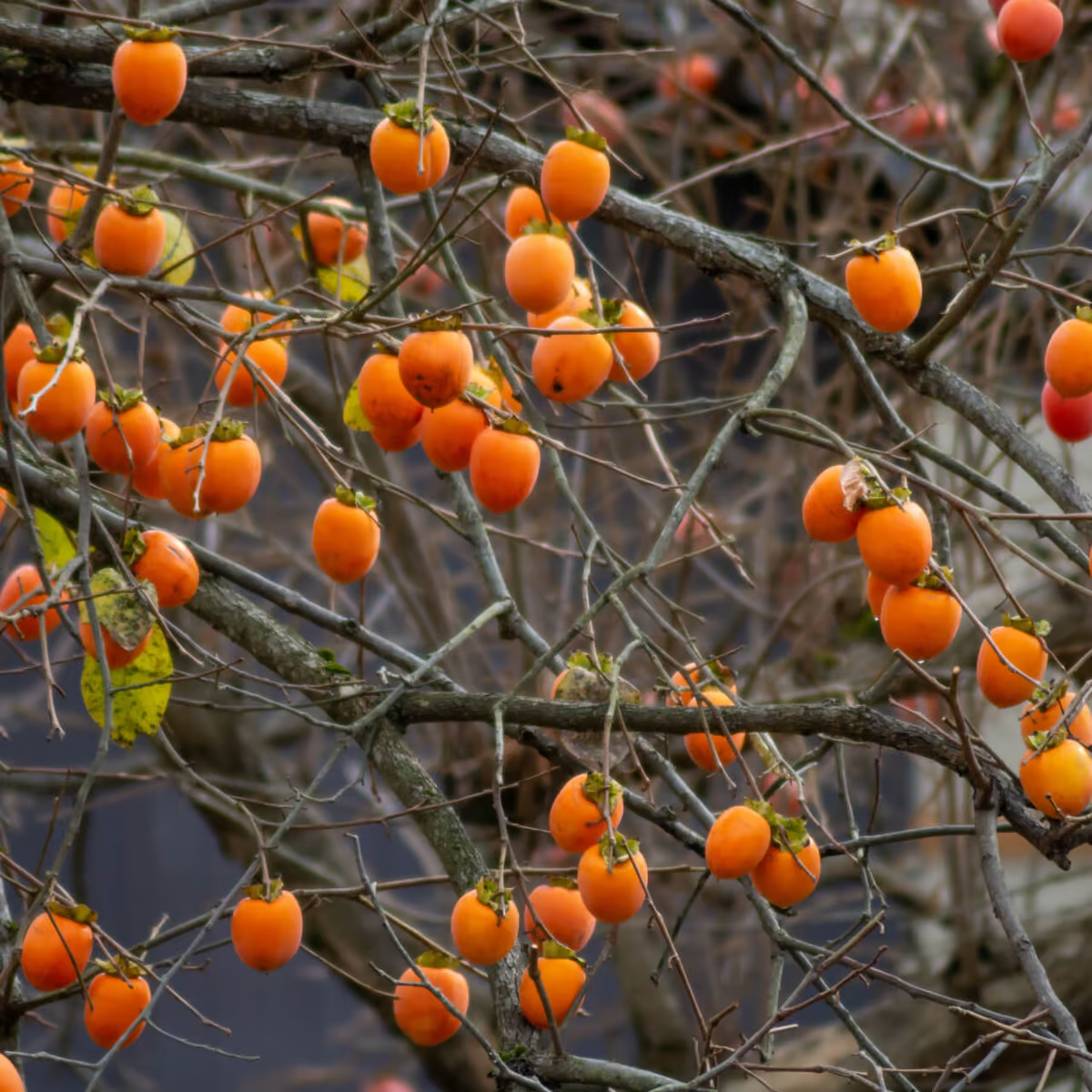
Delicious Fruit:
Enjoy sweet, flavorful persimmons right from your own tree.
Stunning Fall Color:
Vibrant orange and red leaves brighten up your garden in autumn.
Adaptable Growth:
Persimmon seedlings thrive in various soil types and climates, making them a versatile choice for different garden settings.
Low Maintenance:
Persimmon trees are relatively easy to care for, requiring minimal pruning and care while still providing abundant fruit.
Caring Tips
How do I care for my Persimmon Tree Seedlings?
Each box contains detailed care instructions and information about your product. But here's the basics.
Care Tips
Persimmon tree seedlings need well-drained soil and regular watering, especially during dry spells. Fertilize in early spring. Prune lightly to shape and remove any damaged branches. Maintain good air circulation around the tree to protect it from pests and diseases.
Light Requirements
Persimmon tree seedlings thrive in full sun, requiring at least six to eight hours of direct sunlight daily. They can handle shade but will deliver better fruit and grow more vigorously with full sunlight exposure.
Hardy Planting Zones
4 • 5 • 6 • 7 • 8 • 9
Header
Use this content to share information about your store and products.
Frequently Asked Questions
How often should I water my plants?
How do I know if my plant is getting too much or too little sunlight?
What should I do to prepare my plants for winter?
What are the signs that my plant needs fertilizing?
How can I prevent pests from damaging my plants?
How do I choose the right plant for my climate zone?



